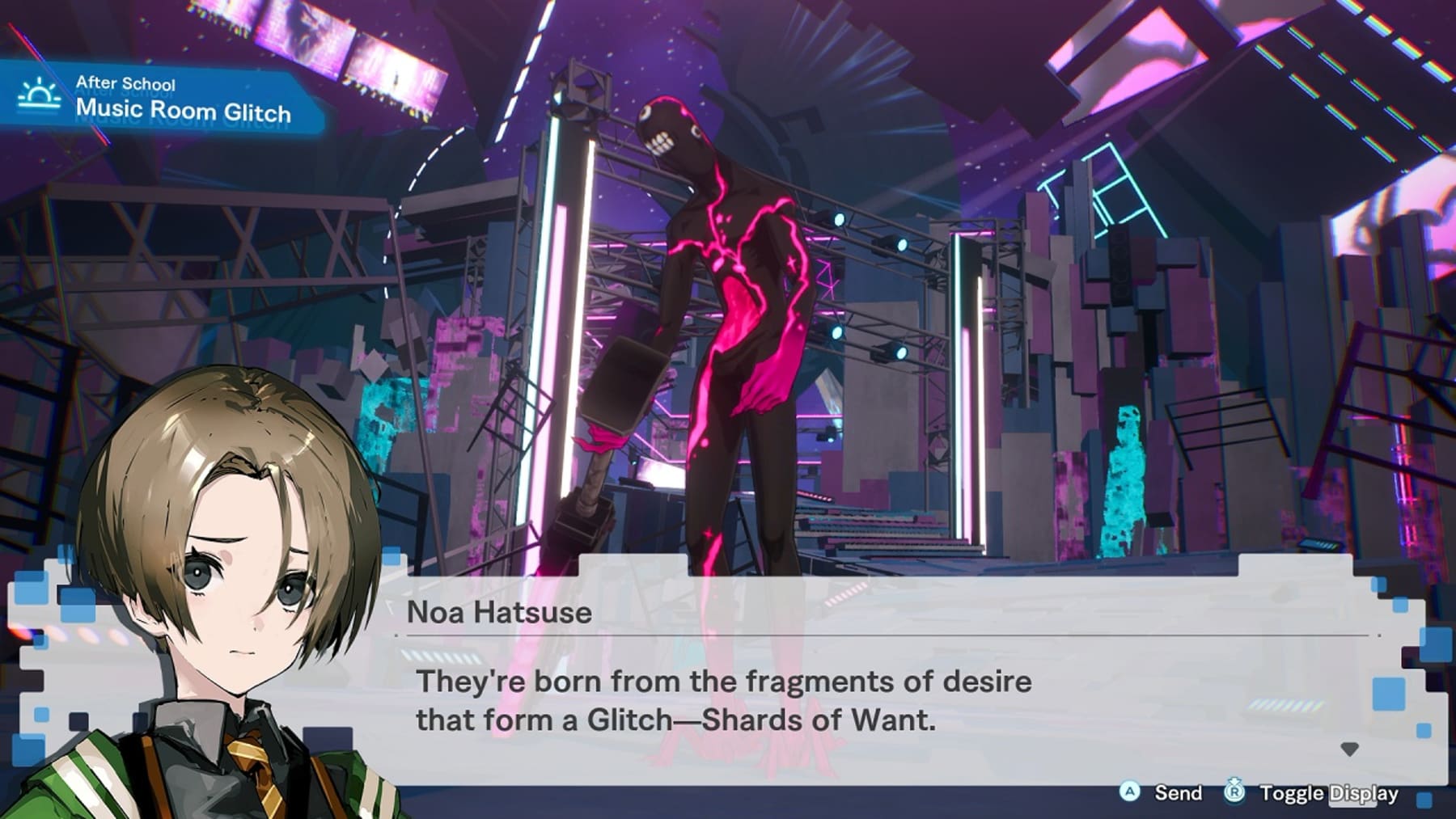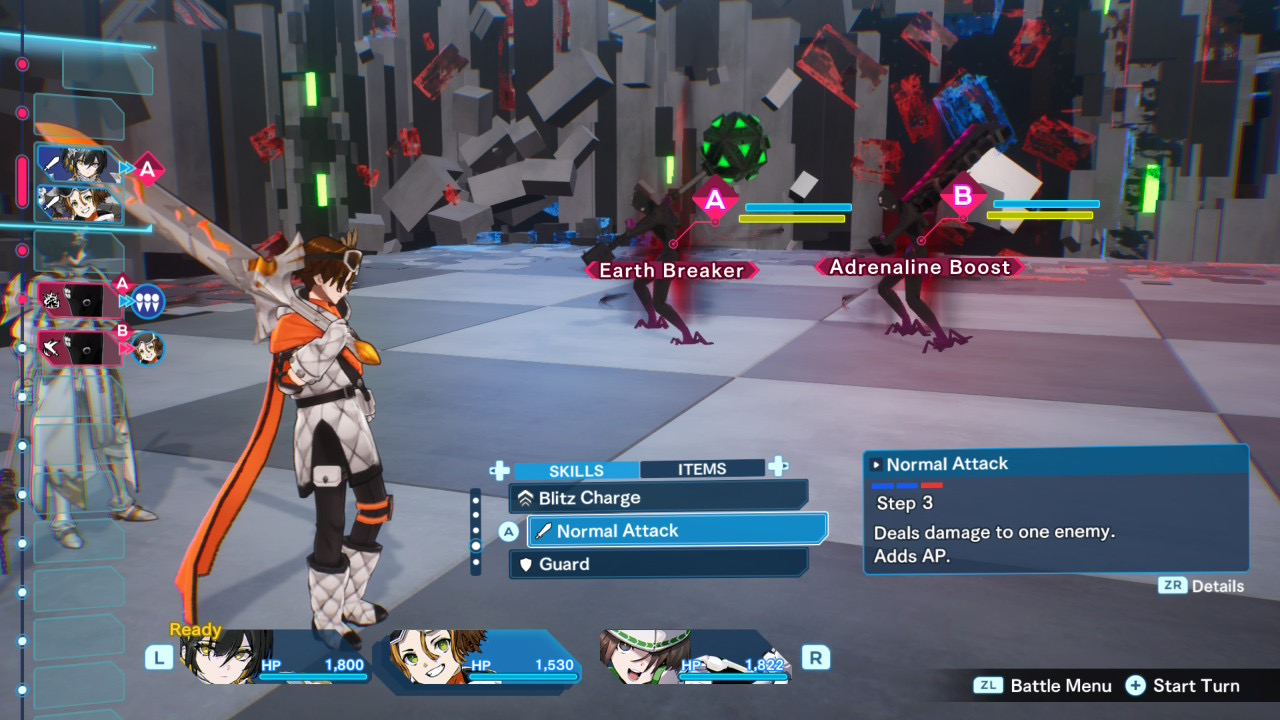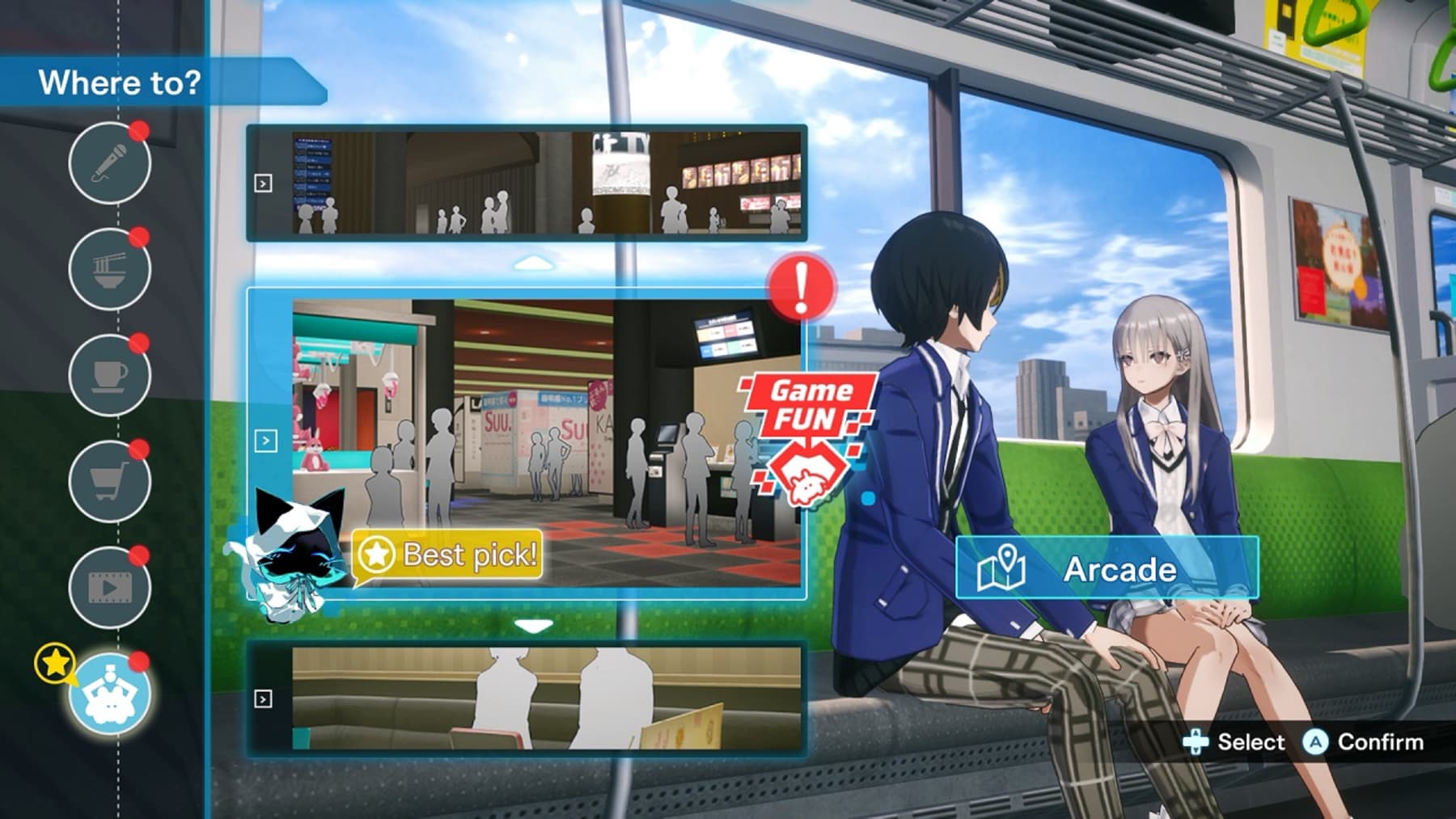Review: Varlet (Nintendo Switch) – Pure Nintendo

I doubt I ever waited so long for something compelling to happen in a video game as I did when playing VARLET. It’s billed as a “school life RPG,” and I’m obviously too far removed from that life to find it terribly interesting—even with the battles against everyone’s negative emotions.
You play as a protagonist you get to name, a young chap who just transferred to Kousei Academy. Weird things happen there, and you quickly find yourself (and your growing circle of friends) at the center of it. To make it through, you’ll need to grow not only as a digital warrior, but also as a real-life companion to your classmates.
If this sounds kind of familiar, that’s because it is. VARLET very much draws inspiration from Persona, but without all the drama and style. It’s Persona-lite, really. For some, that’ll be a good thing; this is a more approachable, relatively stress-free game. Unfortunately, that means it’s also less fun for those seeking more bite.
Gameplay is split between your daily high school routine and the turn-based combat. Our hero joins the SSS (Student Support Services) and is tasked with completing various objectives around the school grounds: finding lost items, hanging flyers, etc. This involves running around the campus gardens and hallways while hitting the R button to activate your rader. Find the item, mission done. Put up a flyer, mission done. It’s all very easy to do, even without the hints you can pick up by listening to others’ conversations or locating scattered memos.
Occasionally, you’ll also find an item that presents you with a morality conundrum. A journal may provide information you need, but is it OK to invade someone’s privacy like that? Turning in lost keys or a phone may be the right thing to do, but if you hand the item directly to its owner, you can leverage your kindness to get her contact info. Your choice will affect your Light and Dark Triad statuses. This, in turn, will affect your passive battle skills and unlock further dialogue options.
Regardless of how you’re growing as a person, it’s not terribly compelling to witness. Thankfully, the campus also contains “glitches,” which are digital manifestations of your classmates’ negative emotions or desires, I think?
Regardless of why they’re there, you can enter these realms for some turn-based combat, which proves a bit more interesting.
Whether you’re closing glitches on campus or working through the lengthier and more intense story-based scenarios (complete with the occasional quiz, so be sure to remember what you’ve learned about the characters), combat is timeline-based, and pretty basic. Enemy moves are forecasted, allowing you to prepare accordingly.
If they’re gearing for a powerful strike, you can try to get in some quick attacks before guarding. The latter delays your next turn, however, allowing them to get in more turns of their own. It’s usually a better idea to break the enemies, which stuns them and prevents their powerful attacks. And if you time it right, you can also bind them while they’re stunned or launch special combos for heavy damage (very important against bosses).
It’s a simple flow to get into, and that leads to simple battles. Even against the bosses, it was rare that I had to resort to using a health item, and I never came close to losing. I was playing on normal mode, so consider going with a higher difficulty if you have any experience at all with turn-based combat.
I wouldn’t have minded the simplicity if the game had developed in other ways, but it really doesn’t. The glitch monsters largely look the same throughout, as do the settings. Was high school really this mundane? Of course it was, but I’m so used to the way school life is presented in poorly written TV shows and movies that I guess I’d forgotten that.
Thankfully, the characters are able to keep things interesting. The growing team of warriors is a fun group with some nice dynamics, and you’ll be juggling those relationships throughout. You can advance friendships by choosing with whom to head home from school and picking activities to share.
Doing so gives you skill points that you can assign in each character’s skill tree. Whether you keep everyone at the same level or choose to OP just a few is up to you, and I’m not sure there’s a right or wrong method. Again, the game is too easy to worry much about how you’re building and equipping your party. And although the plot points will be very familiar, the story runs through them at a crisp pace. I was genuinely interested in learning how things would turn out for these students.
I didn’t mind my time playing VARLET; gameplay is smooth and stable, the graphics are colorful (albeit messy in the glitches), and the audio effects and music are solid. But I am left wondering exactly who the game is for, especially at its $60 asking price. It’s not going to challenge fans of turn-based JRPG combat, so I’m more likely to recommend it to fans of visual novels or those seeking downtime from a more intense JRPG. Either way, you may want to wait for a sale.









